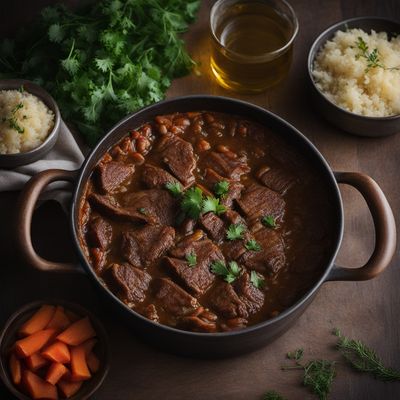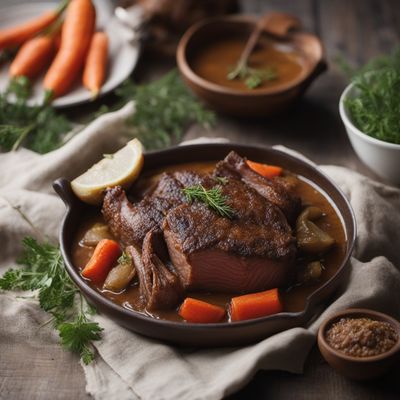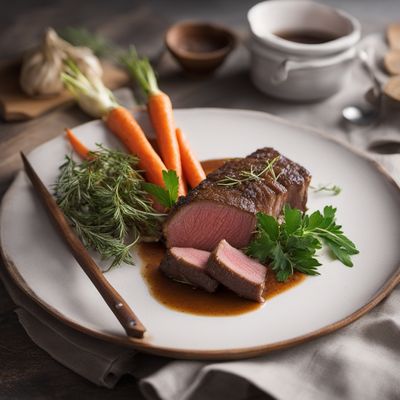
Ingredient
Pale ale beer
"Golden Brew: Exploring the World of Pale Ale Beer"
Pale ale beer is a type of beer that is brewed with pale malted barley, resulting in a golden or amber color. It is characterized by its balanced hop bitterness, moderate alcohol content, and fruity or floral aromas. The taste of pale ale beer can vary, ranging from crisp and refreshing to malty and slightly sweet. It has a medium body and a smooth texture, making it enjoyable to drink on its own or as an ingredient in various recipes. Its appearance is clear and effervescent, with a frothy white head that lingers on the surface.
Origins and history
Pale ale beer originated in England during the 18th century and gained popularity as a refreshing alternative to the darker and heavier beers of the time. It was first brewed using pale malted barley, which gave it a lighter color compared to other beers. Over the years, pale ale beer evolved into different styles, including American pale ale and India pale ale (IPA). Today, it is enjoyed worldwide and has become a staple in the craft beer movement.
Nutritional information
Pale ale beer is a good source of B vitamins, particularly niacin and riboflavin. It also contains minerals such as magnesium, phosphorus, and potassium. However, it is important to note that it is also high in calories and alcohol content, so moderation is key.
Allergens
Pale ale beer may contain gluten, which can trigger allergic reactions or sensitivities in individuals with gluten intolerance or celiac disease.
How to select
When selecting pale ale beer, look for bottles or cans that are stored in a cool and dark place to preserve its freshness. Check the expiration date to ensure its quality. Additionally, consider exploring different breweries and brands to find the flavor profile that suits your preferences.
Storage recommendations
To maintain the freshness and quality of pale ale beer, store it in a cool and dark place, away from direct sunlight and heat sources. It is best consumed within a few months of purchase to enjoy its optimal flavor.
How to produce
Producing pale ale beer at home requires specialized equipment and knowledge of the brewing process. Amateur brewers can start by researching homebrewing kits or attending brewing classes to learn the necessary techniques.
Preparation tips
Pale ale beer can be enjoyed on its own as a refreshing beverage or used as an ingredient in various recipes. It adds depth and complexity to dishes such as beer-battered fish, beer cheese soup, or beer-infused marinades for meats. When using pale ale beer in cooking, it is important to consider its flavor profile and adjust the other ingredients accordingly to achieve a balanced taste.
Substitutions
If pale ale beer is not available, you can substitute it with other types of beer such as lagers or amber ales, depending on the desired flavor profile of the recipe.
Culinary uses
Pale ale beer is commonly used in beer-battered dishes, as it imparts a light and crispy texture. It is also a popular choice for beer-based sauces, stews, and braised dishes, as it adds complexity and depth of flavor. Additionally, pale ale beer can be used in baking, particularly in bread recipes, to enhance the flavor and texture.
Availability
Pale ale beer is commonly available in countries with a strong beer culture, such as the United States, United Kingdom, Germany, Belgium, and Australia.
More ingredients from this category
Recipes using Pale ale beer

Cornish-style Ti-huih-ko
Cornish Delight: A Fusion of Taiwanese and Cornish Flavors

Welsh Rarebit with a Twist
Savory Cheesy Delight: Welsh Rarebit Reinvented

Monmouthshire Goat Stew
Welsh Countryside Delight: Monmouthshire Goat Stew

Iranian-style Beef and Ale Stew
Saffron-infused Beef and Ale Stew: A Taste of Iran

Steak and Ale Pie
Hearty British Beef and Ale Pie

Welsh-inspired Međimurski Gulaš
Welsh Dragon Stew: A Hearty Twist on Međimurski Gulaš

English-style Beef Stew with Ale
Hearty English Beef Stew: A Savory Delight with Ale

Classic British Beef and Ale Pie
Hearty Beef and Ale Delight: A British Pie Tradition

Classic Beer-Battered Fish and Chips
Crispy Delights: Beer-Battered Fish and Golden Chips

Welsh-inspired Kyorchekh
Welsh Dragon Stew: A Hearty Twist on Kyorchekh
